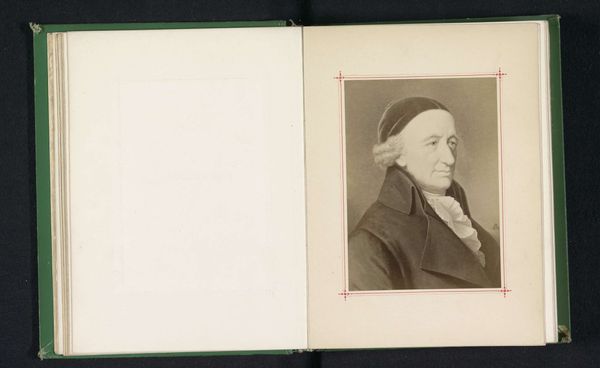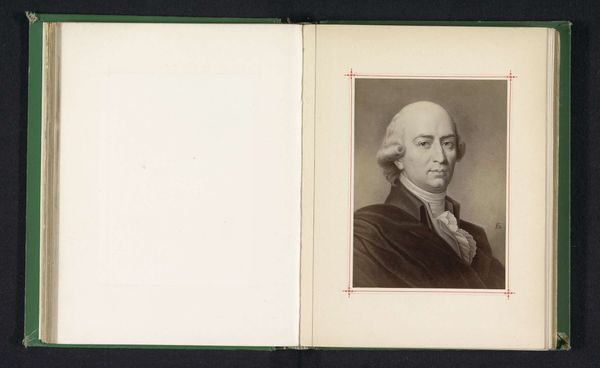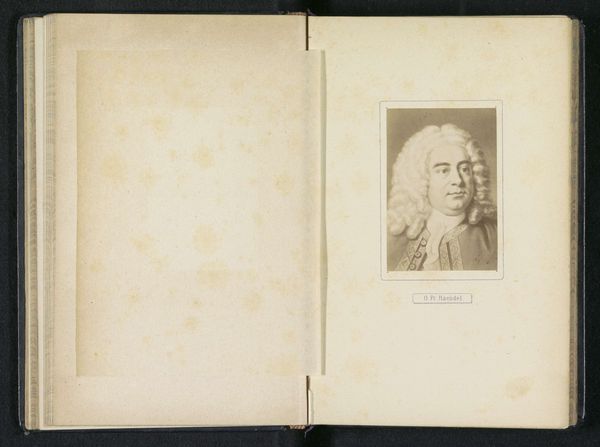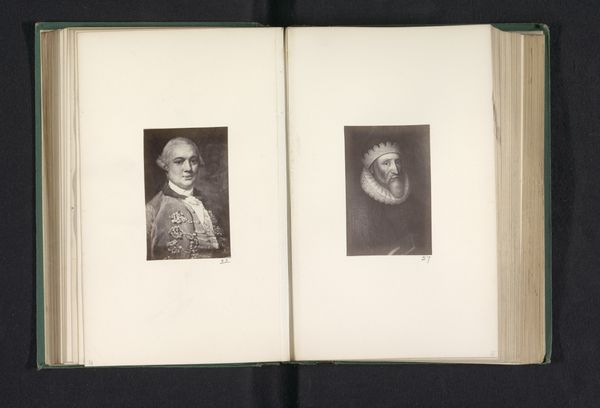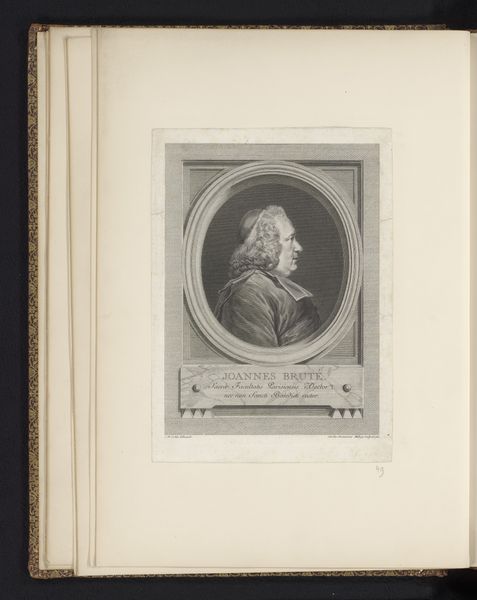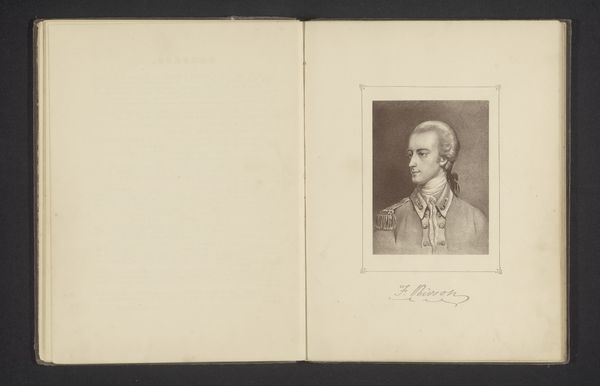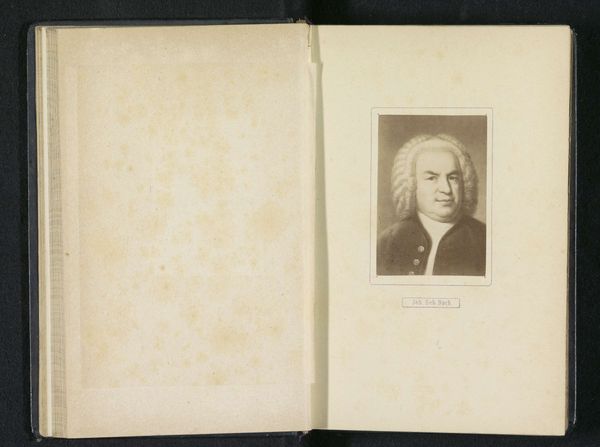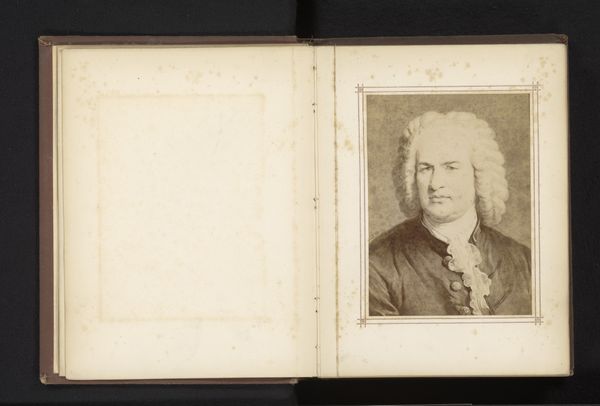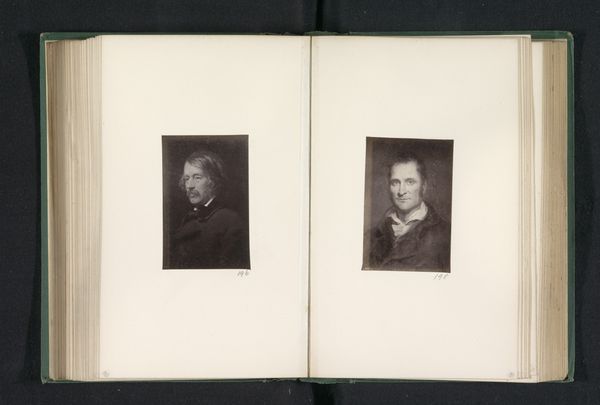
Fotoreproductie van een portret van Friedrich Gottlieb Klopstock door Eugen Felix before 1878
0:00
0:00
print, photography
#
portrait
#
aged paper
#
homemade paper
#
paper non-digital material
#
script typography
#
paperlike
# print
#
hand drawn type
#
personal journal design
#
paper texture
#
photography
#
personal sketchbook
#
design on paper
Dimensions: height 142 mm, width 104 mm
Copyright: Rijks Museum: Open Domain
Editor: Here we have a photographic reproduction of a portrait by Eugen Felix of Friedrich Gottlieb Klopstock, made sometime before 1878. It looks like it’s presented in some kind of bound volume, perhaps a scrapbook? What do you see in this image? Curator: Well, first, I see the constraints of representation. Klopstock, a figure lionized in his time, is presented here not directly, but *through* a photographic copy. It raises questions of authenticity and access to historical figures. Who had access to this image? Who was it meant for? The original portrait it replicates probably circulated within a more elite sphere. Editor: That’s a really good point. I hadn’t thought about the layers of mediation here. Does the method of reproduction impact how we should perceive the subject matter? Curator: Absolutely. Consider the power dynamics at play. Photography, in its relative accessibility compared to painted portraiture, democratizes the image somewhat, yet the sitter's pose and the very act of memorializing him arguably reinscribe social hierarchies. Does this ‘democratization’ reinforce existing norms, or challenge them? Editor: So even in its attempt to maybe share this image widely, the portrait and its reproduction still kind of underscore Klopstock’s position within the societal hierarchy. Wow, that's interesting. I wouldn't have seen it without your insight. Curator: Precisely. And it makes one think about whose images are circulated and preserved. What statements does that preservation, or lack thereof, make? Editor: This image presents itself simply but it is obviously not simple at all. There’s so much to think about when considering this artwork. Curator: Yes, images are powerful carriers of cultural values, and analyzing how and why they are reproduced opens avenues for meaningful dialogue.
Comments
No comments
Be the first to comment and join the conversation on the ultimate creative platform.
